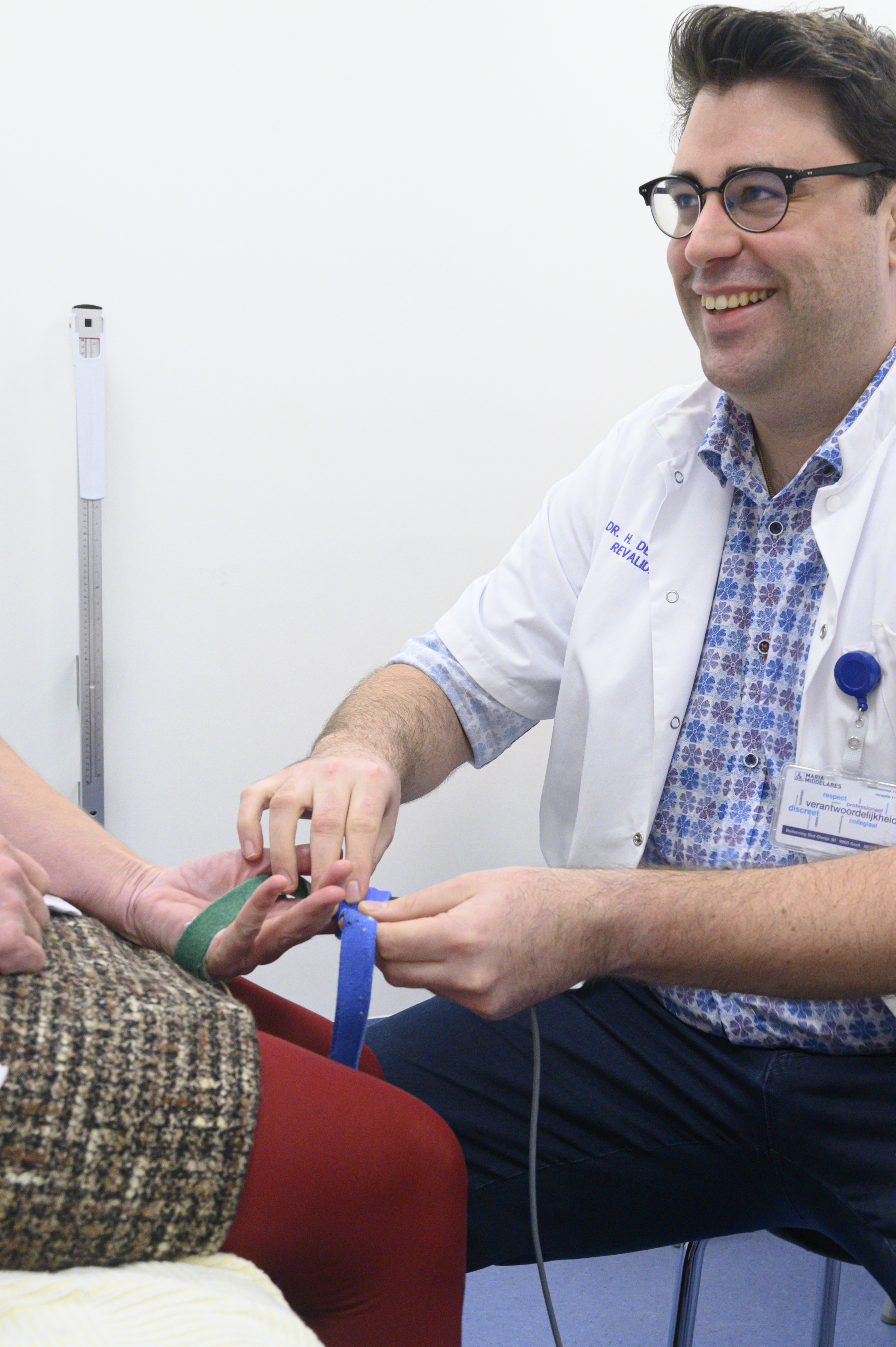Electromyoneurography (EMNG)

Through electromyoneurography (EMNG), the physician can map the functioning of the nerves and muscles. This allows us to see if the nerve is trapped or damaged. In some cases, muscle problems can also be detected.
The first part of the examination consists of the conductance examination (electroneurography). This involves administering shocks in order to control the nerve conductance. We look at the speed, size and width of the waves, among other things.
The second part of the examination consists of the needle examination (electromyography). We use needles to prick various muscles. Using a thin needle, we evaluate the muscle at rest, and then with mild and maximal contraction.
It is important to not use any lotion on your hands or legs during the days leading up to the examination as this can make the conduction test difficult to perform. If you take blood thinners for which you need to have the INR value monitored, it is important to have your INR level checked shortly before the examination is performed.
Something wrong or unclear on this page? Report it.
Latest publication date: 13/08/2024


